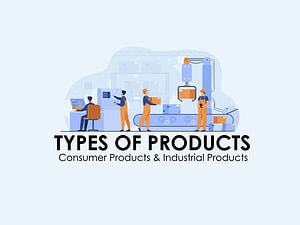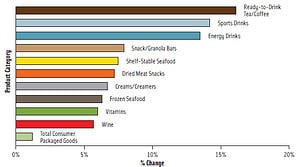What are consumer product goods? How do they differ from producer goods? Do they have a negative surplus? And can a consumer surplus be negative? The answer to these questions and more is essential to the study of consumer surplus. This article will examine the relationship between consumer goods and producer goods and provide an overview of trends in consumer product goods. It will also discuss the relationship between the consumer surplus and the level of unemployment. And we will examine how these trends affect our understanding of what a surplus is.

What is considered consumer goods?
A good that is purchased for personal use is considered a consumer product. These items include things like toilet paper, deodorant, packaged foods, and clothing. We need these items for our daily lives and companies need to make them in order to keep up with the demand. But what exactly is a consumer product? Here’s a quick breakdown of some definitions. Whether you’re looking for a product that will last you for several years or a luxury item that will last you for decades, they are all consumer goods.
Consumer goods are the finished products of a production process.
They’re the result of production, not raw materials, or components. Consumer goods are commonly found on store shelves. They can be durable or non-durable, and can be used repeatedly or only once. Durable consumer goods include appliances such as televisions, refrigerators, air conditioners, and dishwashers. They’re typically purchased by people who don’t need a lot of research or care.
Fast-moving consumer goods (FMCG) are the products that consumers buy repeatedly, such as food, groceries, and beverages. Other items are marketed as consumer goods, such as housekeeping and medical products. These items are often purchased at low costs and can quickly deplete the shelf space of a store. However, their low costs make them ideal for companies looking to increase revenue and market share. Despite the short shelf life, consumers can make large profit margins on these products.
These items are used by consumers every day and are often inexpensive.
Examples of consumer products include toilet paper, cleaning products, makeup, and other items found in the home. They contribute close to two trillion dollars annually to companies and are a part of our daily lives. Companies that make these products include Johnson & Johnson, Proctor & Gamble, and Phillip Morris. So, what exactly are consumer product goods? Here’s a breakdown of what a consumer product is.
What are consumer goods and producer goods?
Consumer product goods are the final output of a productive process. Businesses and entrepreneurs combine raw materials such as land and basic metals to create a finished product. Producer goods are those that are used in the production process but are not consumed by consumers. Both types of goods can be useful to people, but they serve different purposes. Listed below are some differences between producer goods and consumer product goods. To better understand consumer goods, let’s look at the distinction between them.
Consumer goods are products that meet a need of an individual.
They are produced to satisfy a need and are not made to be sold for profit. Consumer goods are simple and cheap, often bought by consumers for their own use. They are also less complex to produce and do not involve many formalities. In addition, consumers often buy them more frequently than producers, making them more affordable to purchase. Producer goods, on the other hand, are created for production, and are used by producers to create more valuable goods.
While consumer goods are the end products of a business, producer goods are used to produce those final products. Consumer goods are created from intermediate goods. The production process begins with raw materials, such as copper, coal, iron, and petroleum. These materials are used to create a final product, which the consumer can then purchase. The difference between producer goods and consumer goods is the difference in ownership of the final product. Often, consumer goods have a shorter life expectancy than producer goods, but they are still the final product of the production process.
The definition of producer goods and consumer products is complicated, but the difference is clear.
A consumer buys something for personal use or for consideration. This person pays for something or promises to pay for it. Capital goods, on the other hand, are purchased by an organization to assist in production. They are included as assets on a company’s balance sheet and are depreciated. You can understand the difference better by understanding these terms.
Can consumer surplus be negative?
Can consumer surplus be negative? It depends. In some situations, the price of a product is higher than the maximum rate that a buyer is willing to pay, and the buyer does not purchase the product. In these cases, the consumer surplus is zero, but in other cases, it is positive. The number of beverages consumers buy declines, for instance, if the price of a beverage doubles. This is a case of price elasticity.
During equilibrium, the price of the last good consumer purchases should match the marginal benefit of each additional dollar that the consumer would pay. This means that by shifting consumption, a consumer will make himself better off for each dollar that he spends. This is the definition of consumer surplus. Consumer surplus is the difference between the price a consumer is willing to pay and the price that the market will actually allow. The surplus is the term used to describe this difference.
However, if the price of a product drops, the consumer surplus will increase. The lower the price, the higher the difference between the consumer’s willingness to pay and the price the market is willing to pay. The lower the price, the greater the quantity demanded. However, the decrease in quantity means that the production of the good becomes less profitable, thus reducing the consumer surplus. The shortage of goods will cancel out the excess of consumers.
The total surplus will maximize when the market price reaches its equilibrium.
The total surplus is at its maximum when the quantity demanded equals the total price of the good. If the prices are lower than the equilibrium price, there will be shortages. As a result, the total surplus will be lower than the equilibrium price. A negative surplus is not a sign of a crisis. However, it means that consumers are not getting the quality they want.
As a result, the market will become more profitable. The difference between the minimum price a consumer would pay for the good and the lowest price a producer would accept will be the producer’s surplus. The difference between the supply and demand curves will be the producer’s surplus. In other words, the consumer’s surplus is not positive. But the producer’s surplus is positive. If the demand is low, then the price for the product is low.

Consumer product goods trends
The consumer goods industry is undergoing a transformation. With global affairs and consumer tastes changing, companies are adapting to meet these evolving needs. For example, the consumer skincare industry is booming as more people are opting for anti-aging products. In addition, meal kits are gaining popularity among busy individuals, who are eager to try out new dishes. The emergence of the Internet is also impacting the traditional business model. Consumers are becoming more sophisticated, and companies are increasingly adopting innovative approaches to meet these changing preferences.
Global events and digital developments have shaped the CPG industry.
Staying up-to-date with industry developments is crucial for players. Keeping an eye on consumer trends is crucial for a successful future. It’s never too early to prepare for the year ahead. And with so many developments happening in the consumer packaged goods industry, there’s never been a better time to get ahead. In other words, the CPG industry will only continue to evolve over the next years.
New challenges have forced consumer goods brands to reconsider their supply chains and focus on just-in-time logistics. To avoid experiencing reordering periods that can last weeks, brands must keep adequate amounts of inventory close to retail partners and consumers. As a result, brands have increased safety stock levels. As a result, businesses that fall short of customers’ expectations are serving fewer consumers. This shift is transforming the industry. Retailers are implementing new business models and exploring eCommerce to address consumer demands.
While the current economic environment is not ideal, the industry has the power to reinvent itself.
By embracing new technologies, working collaboratively, and focusing on sustainable development, the consumer-goods industry can become more resilient and environmentally conscious. But there are many challenges ahead. In order to survive, fast-moving consumer goods companies must adapt to the current challenges. For this, they should consider utilizing AI. However, they should not forget the need to adopt a new mindset and new ways of working.
